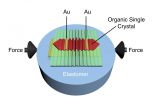(Press-News.org) Fairfax, Va., May 5, 2015--The American Society for Radiation Oncology (ASTRO) is issuing a new guideline, "Definitive and adjuvant radiotherapy in locally advanced non-small cell lung cancer: An American Society for Radiation Oncology (ASTRO) evidence-based clinical practice guideline." The guideline's executive summary is published in the May-June issue of Practical Radiation Oncology (PRO), ASTRO's clinical practice journal. The complete guideline, which cites 35 years of data to help guide current treatment and future research, is available online as an open-access article in PRO. The American Society of Clinical Oncology (ASCO) today issued an endorsement of ASTRO's guideline.
ASTRO's guideline panel included 14 leading lung cancer oncologists in the U.S. and Canada, reviewed 74 studies from English language publications within the PubMed database, published from January 1, 1966 to March 15, 2013. The panel developed five Key Questions on the role of definitive and adjuvant radiation therapy (RT) for locally advanced non-small cell lung cancer (LA NSCLC), which represents nearly one-quarter of all lung cancer patients. In addition to the 74 studies, 27 published clinical practice guideline documents that were relevant to one or more of the five Key Questions were reviewed to ensure the guideline panel obtained all appropriate clinical trial reports.
The first Key Question addresses the ideal external beam dose fractionation for curative-intent treatment of LA NSCLC with RT alone without chemotherapy. The evidence cited in the guideline suggests that RT alone was associated with improved overall survival when compared with observation strategies or chemotherapy alone; however, patients experienced treatment-related side effects such as esophagitis and pneumonitis. RT may be used alone as definitive radical treatment for patients with LA NSCLC who are not eligible for combined modality therapy. A minimum dose of 60 Gy is recommended to optimize clinical outcomes such as local control.
The second Key Question examines the ideal external beam dose fractionation for curative-intent treatment of LA NSCLC with chemotherapy. The standard thoracic RT dose fractionation for patients treated with concurrent chemotherapy is 60 Gy, administered as 2 Gy, once a day for six weeks. It has not been demonstrated that increasing the dose beyond 60 Gy with conventional fractionation is associated with any clinical benefits, including overall survival.
The third Key Question details the ideal timing of external beam RT in relation to systemic chemotherapy for curative-intent treatment of LA NSCLC. The guideline recommends that when RT and chemotherapy are used to treat LA NSCLC, RT should ideally begin at the same time chemotherapy begins (concurrent chemoradiation). For patients that cannot tolerate concurrent chemoradiation, the guideline recommends sequential chemotherapy followed by radical radiation treatment.
The fourth Key Question examines the indications for adjuvant post-operative RT for curative-intent treatment of LA NSCLC. The use of post-operative RT for completely resected LA NSCLC with N2 mediastinal disease is associated with improved local control but not improved overall survival. According to the guideline, post-operative RT is not commonly recommended for patients with N0 or N1 mediastinal disease. The guideline recommends that patients with microscopic or macroscopic residual primary and/or nodal disease should receive post-operative RT to improve local control.
The fifth Key Question addresses when neoadjuvant RT or chemoradiation prior to surgery is indicated for curative-intent treatment of LA NSCLC. According to the guideline, there is no Level I evidence recommending the routine use of pre-operative neoadjuvant RT or chemoradiation for the management of LA NSCLC. However, the guideline provides information on ideal patient selection, operation type and radiation dose for patients selected to receive RT prior to surgery.
"Radiation therapy is a central component of treatment protocols for patients with locally advanced non-small cell lung cancer, with five-year survival rates of approximately 26 percent" said George Rodrigues, MD, PhD, co-chair of the guideline panel and a radiation oncologist at London Health Sciences Centre in London, Ontario. "This guideline summarizes more than 35 years of clinical trial evidence to provide the best evidence-based guidance on RT to improve outcomes for this challenging patient population."
INFORMATION:
The guideline was approved by ASTRO's Board of Directors in June 2014 and has been endorsed by ASCO. ASCO's endorsement, "Definitive and Adjuvant Radiotherapy in Locally Advanced Non-Small Cell Lung Cancer: ASTRO Clinical Practice Guideline: American Society of Clinical Oncology Endorsement," was issued today in the Journal of Clinical Oncology and in the Journal of Oncology Practice and is available online at http://www.jco.org and http://jop.ascopubs.org. The guideline panel included radiation oncologists, a medical oncologist, a thoracic surgeon and a radiation oncology resident: Dr. Rodrigues (co-chair), Gregory Videtic, MD, CM (co-chair), Hak Choy, MD, Jeffrey Bradley, MD, Kenneth E. Rosenzweig, MD, FASTRO, Jeffrey Bogart, MD, Walter J. Curran Jr., MD, Elizabeth Gore, MD, Corey Langer, MD, Alexander Louie, MD, MS, MSc, Stephen Lutz, MD, FASTRO, Mitchell Machtay, MD, Varun Puri, MD, MSCI, and Maria Werner-Wasik, MD, FASTRO.
For a copy of the complete guideline, contact ASTRO's Press Office at press@astro.org. For more information about PRO, visit http://www.practicalradonc.org.
ABOUT ASTRO
ASTRO is the premier radiation oncology society in the world, with more than 11,000 members who are physicians, nurses, biologists, physicists, radiation therapists, dosimetrists and other health care professionals that specialize in treating patients with radiation therapies. As the leading organization in radiation oncology, the Society is dedicated to improving patient care through professional education and training, support for clinical practice and health policy standards, advancement of science and research, and advocacy. ASTRO publishes two medical journals, International Journal of Radiation Oncology, Biology, Physics and Practical Radiation Oncology; developed and maintains an extensive patient website, http://www.rtanswers.org; and created the Radiation Oncology Institute, a non-profit foundation to support research and education efforts around the world that enhance and confirm the critical role of radiation therapy in improving cancer treatment. To learn more about ASTRO, visit http://www.astro.org.
They may not be on Facebook or Twitter, but dolphins do, in fact, form highly complex and dynamic networks of friends, according to a recent study by scientists at Harbor Branch Oceanographic Institute (HBOI) at Florida Atlantic University. Dolphins are known for being highly social animals, and a team of researchers at HBOI took a closer look at the interactions between bottlenose dolphins in the Indian River Lagoon (IRL) and discovered how they mingle and with whom they spend their time.
Through intensive photo-ID surveys conducted along the IRL, which were carried ...
A recent and famous image from deep space marks the first time we've seen a forming planetary system, according to a study by U of T astrophysicists.
The team, led by Daniel Tamayo from the Centre for Planetary Science at U of T Scarborough and the Canadian Institute for Theoretical Astrophysics, found that circular gaps in a disk of dust and gas swirling around the young star HL Tau are in fact made by forming planets.
"HL Tau likely represents the first image taken of the initial locations of planets during their formation," says Tamayo. "This could be an enormous ...
TORONTO, ON - Adults who experienced multiple incidents of childhood maltreatment were more than two times as likely to have trouble sleeping than their counterparts who were not maltreated during childhood, according to a new study from researchers at the University of Toronto, University of Ottawa, and Western University. The study appears online in the journal Sleep Medicine.
"We found a significant association between childhood maltreatment and difficulty sleeping later in life," says lead author Philip Baiden, a PhD Student at the University of Toronto's Factor-Inwentash ...
New technology developed at the Martinos Center for Biomedical Imaging at Massachusetts General Hospital (MGH) may extend the benefits of magnetic resonance imaging (MRI) to many patients whose access to MRI is currently limited. A redesign of the wire at the core of the leads that carry signals between implanted medical devices and their target structures significantly reduces the generation of heat that occurs when standard wires are exposed to the radiofrequency (RF) energy used in MRI. The novel system is described in a paper published in the online Nature journal Scientific ...
AMHERST, Mass. -- A revolution is coming in flexible electronic technologies as cheaper, more flexible, organic transistors come on the scene to replace expensive, rigid, silicone-based semiconductors, but not enough is known about how bending in these new thin-film electronic devices will affect their performance, say materials scientists at the University of Massachusetts Amherst.
Writing in the current issue of Nature Communications, polymer scientists Alejandro Briseño and Alfred Crosby at UMass Amherst, with their doctoral student Marcos Reyes-Martinez, now ...
ALEXANDRIA, VA, MAY 5, 2015 -- A statistical analysis of Job Corps data strongly suggests positive average effects on wages for individuals who participated in the federal job-training program.
Results of the analysis recently were included in an article in the Journal of Business & Economic Statistics (http://www.tandfonline.com/toc/ubes20/current), a professional journal published by the American Statistical Association . The study was conducted by Xuan Chen of Renmin University of China and Carlos A. Flores of California Polytechnic State University.
Job Corps is ...
DURHAM, N.C. -- A 12-week dose of an investigational three-drug hepatitis C combination cleared the virus in 93 percent of patients with liver cirrhosis who hadn't previously been treated, according to a study in the May 5, 2015, issue of The Journal of the American Medical Association.
Bristol-Myers Squibb funded the trial of the combination of three drugs -- daclatasvir, asunaprevir, and beclabuvir. None of the three drugs are FDA-approved, but daclatasvir is currently under review by the FDA. Duke Medicine researchers collaborated on the design and analysis of the ...
In two studies appearing in the May 5 issue of JAMA, patients with chronic hepatitis C virus (HCV) genotype 1 infection and with or without cirrhosis achieved high rates of sustained virologic response after 12 weeks of treatment with a combination of the direct-acting-antiviral drugs daclatasvir, asunaprevir, and beclabuvir.
Current estimates indicate that 130 million to 150 million people worldwide are chronically infected with HCV, resulting in up to 350,000 deaths per year. Of the 7 HCV genotypes identified, genotype 1 is the most prevalent worldwide, accounting for ...
Among patients with Clostridium difficile infection (CDI) who recovered following standard treatment with the antibiotics metronidazole or vancomycin, oral administration of spores of a strain of C difficile that does not produce toxins colonized the gastrointestinal tract and significantly reduced CDI recurrence, according to a study in the May 5 issue of JAMA.
C difficile is the cause of one of the most common and deadly health care-associated infections, linked to 29,000 U.S. deaths each year. Rates of CDI remain at unprecedented high levels in U.S. hospitals. Clinical ...
In what is a major step towards the prevention of recurring bouts of Clostridium difficile (Cdiff) infection, an international team led by Dale Gerding, MD, Hines Veterans Administration (VA) research physician and professor of Medicine at Loyola University Chicago Stritch School of Medicine, has shown that giving spores of non-toxic Cdiff by mouth is effective in stopping repeated bouts of Cdiff infection which occurs in 25-30 percent of patients who suffer an initial episode of diarrhea or colitis. The study is published in the May 5 issue of the Journal of American ...


